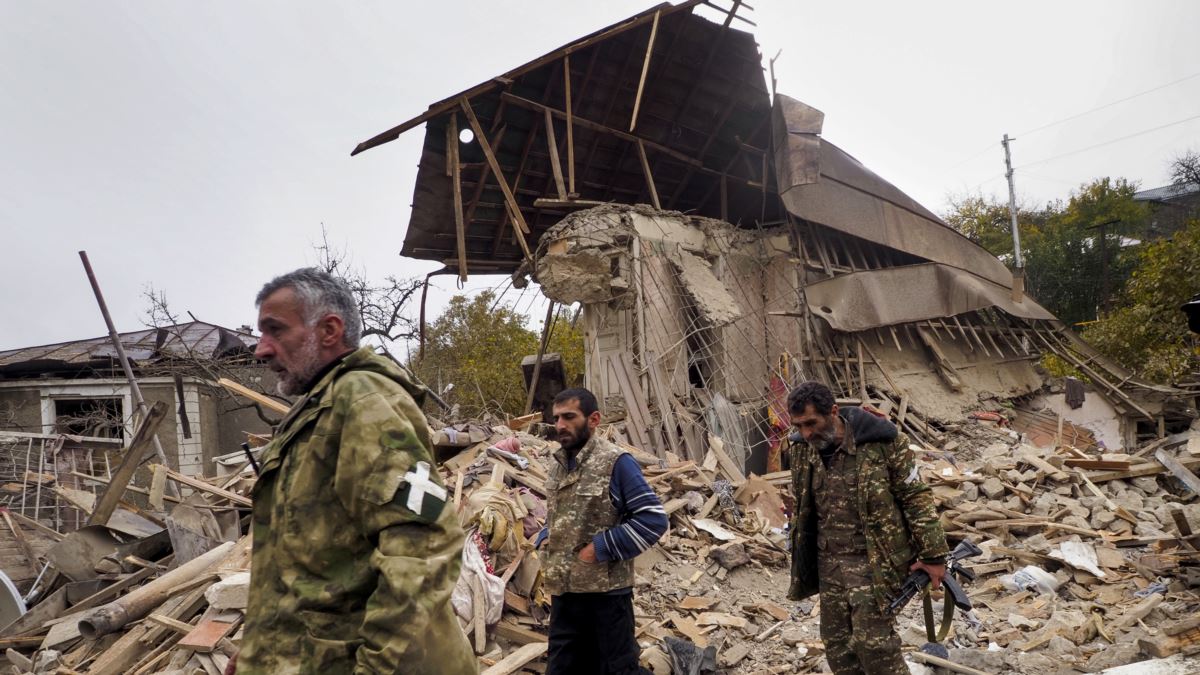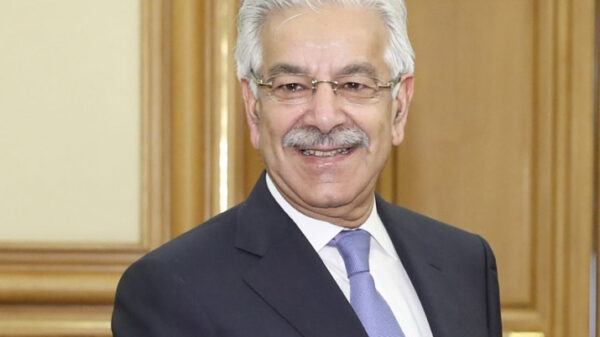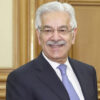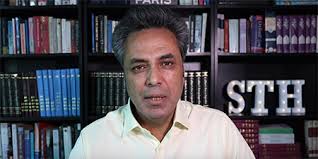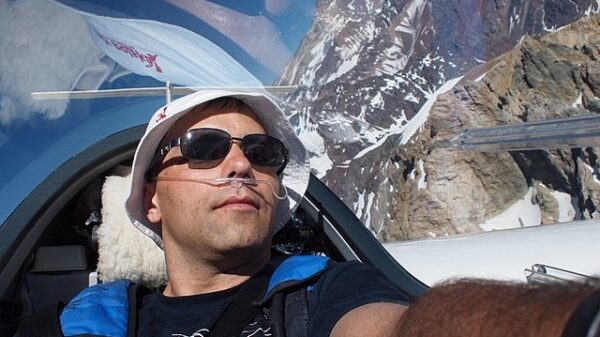Article by: Mustafa Moiz
In the backdrop of global events taking precedence in the international eye, bloody war in the south Caucasus has erupted and drawn to a close. Azerbaijan and Armenia have clashed once more over the disputed region of Nagorno-Karabagh, and the six-week war has seen the most serious fighting between the two nations since 1994. Along with dramatic territorial changes in Karabagh, this conflict has highlighted the shifts in power dynamics in the region, in particular, Russian pragmatism in its backyard and Turkey’s growing international presence.
Nagorno-Karabagh is a sparsely populated mountainous region located within Azerbaijan to which neighboring Armenia lays claim. It has been a source of conflict and tension between the two nations for much of the past century. Today, it is internationally recognized as a part of Azerbaijan, but Karabagh and the surrounding areas of Azerbaijan have been occupied by Armenia and Armenian loyalists for the past quarter-century. Nagorno-Karabagh has a majority Armenian population but the districts surrounding it have been historically Azerbaijani, from where some 600,000 Azerbaijanis were driven out by the Armenian occupation and escaped to Azerbaijan proper.
In the aftermath of the first World War, the map of the entire south Caucasus was being rearranged, as the Ottoman and Russian empires fell and nations scrambled to lay claim to lands they viewed as rightfully theirs. Armenia was quick to lay claim to all territories it viewed as historically Armenian, invading eastern Turkey, from where they were beaten back by Mustafa Kemal’s forces, and fighting a war with Azerbaijan over Nagorno-Karabagh. However, for both Armenia and Azerbaijan, independence was shortlived, as the entire south Caucasus was subsumed into the newly emergent Soviet Union. The USSR assigned the autonomous Nagorno-Karabagh Oblast to Azerbai- jan under Soviet authority. It is worth noting that the settlement of the borders of the Soviet republics at this time was left to Josef Stalin, a native of the region and an ethnic Georgian. While the two nations were republics under the Soviet umbrella, peace reigned.
As the Soviet Union approached its collapse under Mikhail Gorbachev’s perestroika, the ethnic Armenian inhabitants of Nagorno-Karabagh clashed with the government of Azerbaijan. By 1988, this conflict had escalated into a full-scale war between Armenia and Azerbaijan. Turkey naturally supported Azerbaijan, as did Pakistan, while Russia and Iran supported Armenia. The Turkish military buildup on the Armenian border in support of Azerbaijan was halted when Russia deployed its own military and threatened a new world war if Turkey were to take military action against its Armenian ally. With Russian support, Armenia was able to take not just Nagorno-Karabagh, but much of the surrounding area, which had an Azerbaijani majority. Over half a million Azerbaijanis were displaced by the Armenians and given refuge in Azerbaijan proper.
In this way, the situation in Nagorno-Karabagh has been at a stalemate since 1994, with Karabagh legally being Azerbaijan, but Armenia exercising control over the territory and an Armenian backed government, recognized by no one including Armenia, running the land as the Republic of Artsakh. Occasional bursts of violence and low-level warfare have intermittently taken place between Armenia and Azerbaijan as Azerbaijan attempts to make small territorial gains. But a ceasefire has always been mediated by the Minsk Group (Russia, USA, and France), with Russia, in particular, ensuring that the basic status quo is maintained.
This situation took a new turn in 2018 when Armenia elected a new Prime Minister, Nikol Pashinyan. Armenia is a country that is firmly in Russia’s camp and maintains reliance on its protector. It is certain that, like most Armenian politicians, Nikol Pashinyan also believes the Russian alliance to be Armenia’s most important diplomatic relation. But Pashinyan has also looked to establish closer ties with western Europe and the United States, a development which has not gone unnoticed in Moscow.
Like all Armenian politicians, Nikol Pashinyan is a belligerent supporter of the Republic of Artsakh. Propped up by Armenia and not recognized by any country, this government is heavily reliant on, and therefore influenced by, Armenia. In 2020, Arayik Harutyunan became the President of Artsakh. Harutyunan held his inauguration ceremony, attended by Pashinyan, in Shusha, a city of historical, cultural, and religious significance to Azerbaijanis, and announced a decision to move the capital of Artsakh from Stepanakert to Shusha by May 2022, which can be understood in the eyes of Azerbaijan to be a move similar to Israel moving its capital from Tel Aviv to Jerusalem. This was just one of a list of transgressions and aggressions that the Azerbaijani government placed before Armenia. Others included the Armenian government scrapping proposals for peace and announcing a new strategy, ‘a new war for new territories’, propagating a ‘resettlement program’ within the territory of Nagorno-Karabagh, and announcing plans to settle Lebanese Armenians in Karabagh. Under Nikol Pashinyan, Armenia has taken a far more aggressive position in Nagorno-Karabagh.
There is no doubt that Azerbaijan fired the first shot in September 2020. Nor is there any doubt that Azerbaijan had planned this war in advance or that it was in response to increased Armenian belligerence and fortified military positions in Nagorno-Karabagh. In the week leading up to the war on 27th September, the president of Artsakh, Harutyunan, had announced that his government intended to move the capital from Stepanakert to Shusha, a clear provocation towards Azerbaijan. Days later, the Azerbaijani government released statements detailing Armenia’s aggressions in the weeks leading up to the war. The next day, Azerbaijani President Ilham Aliyev demanded Armenia present a timetable for the withdrawal of its forces from Nagorno-Karabagh and other territories it occupied, something he knew Yerevan would refuse to do. Two days later, Azerbaijan attacked Armenian military positions in Nagorno-Karabagh and the war began.
On the first day of fighting, Russia sent heavy military transport planes to Yerevan in response to Turkish heavy military aircraft having landed in Baku. Azerbaijan began shelling in Nagorno-Karabagh and destroyed Armenian air defense systems while Armenia downed an Azerbaijani combat gunship. It was clear that the fighting would be intense but it also appeared that Russia would step in to support Armenia in the case of Turkish forces intervening. Shades of 1994 seemed apparent. But apart from statements by Russia and the Minsk Group calling for a cessation of hostilities, the war continued unabated. Turkey, Georgia, and Azerbaijan closed their airspace to Russia to prevent Moscow from sending support to Armenia, resulting in Russia relying on a circuitous route through Iran, an Armenian ally. However, ethnic Azeris in Iran’s northern Azerbaijan province rendered roads unusable for Iran and Russia to send supplies and assistance to their Armenian ally and protests erupted in Tabriz in support of Azerbaijan which was swiftly suppressed by Tehran. Iran also moved a military division to its northern border. Also involved in the fighting were Syrian Turkmens alongside Azerbaijan, and Kurds and Lebanese Armenians on the side of Armenia. However, the Armenian and, ludicrously, Indian claims that Pakistani and Turkish military forces were fighting alongside Azerbaijan has as of yet not been substantiated by evidence. The primary fighting took place in southern Nagorno-Karabagh, and the north saw only limited land changing hands. Within the first week of fighting, Azerbaijani forces had captured the village of Madagiz (Suqovişan). This was to be the limit of Azerbaijani gains in the north. A week later, the city of Cebrayil, in the south, was taken by Azerbaijan. As long as Turkey did not militarily intervene, Russia also stayed its hand. This meant that the conflict did not spread to the larger region.
Many Armenians viewed this as a war of survival, viewing and portraying themselves as victims of a Turkish attempt to wipe them out. For Azerbaijan, this was a very emotional war, as refugees from Karabagh who had joined the Azerbaijani military returned to childhood homes. By the morning of the 8th of November, Azerbaijan President Ilham Aliyev announced that Shusha had been retaken by Azerbaijan. The city which Harutyu- nan had intended to make the new capital of Artsakh, and from which 20,000 Azeris had fled to Azerbaijan after the Battle of Shusha in 1992, was now once more a part of Azerbaijan. Apart from the symbolic value, Shusha was also an immensely important strategic point located on a mountaintop less than five miles from Stepanakert, the capital of Artsakh, and an ideal base from which to besiege the capital. It was at this point that Russia finally stepped in to save Armenia from total defeat.
On the 9th of November, Vladimir Putin, Nikol Pashinyan, and Ilham Aliyev signed a ceasefire agreement and the war ended. The terms of the ceasefire spell a decisive, though not total, Azerbaijan victory. They include a return of all seven districts occupied by Armenia back to Azerbaijan, and Azerbaijan also keeps its military gains in Nagorno-Karabagh. Azerbaijan is also guaranteed a route to its western wing, Nakhchivan, through southern Armenia. The crucial Lachin corridor, Armenia’s only route to its remaining holdings in Nagorno Karabagh, will be patrolled by Russian peacekeepers.
The mood in Azerbaijan is jubilant, and Turkish, Pakistani, and Azerbaijani flags are ubiquitous in the country. For Georgia, a ceasefire is welcome, as it had to walk a diplomatic tightrope to maintain its neutrality and avoid alienating either of its neighbors. This agreement is disastrous for Armenia and has already led to the downfall of Harutyunan in what remains of Artsakh. With widespread protests and political discontent in Armenia, Pashin- yan’s position appears perilous. Many Armenians blame him not only for his mishandling of a war where Armenia was outmatched but also for displeasing Russia by seeking greater ties with the West. Putin has fanned the flames by saying that Pashinyan had the opportunity to end the war almost a month earlier, that Ilham Aliyev had agreed to a ceasefire with the provision that Azerbaijanis uprooted from their homes be allowed to return.
Turkey has emerged from the war much stronger. The Turkish alliance with Azerbaijan has been radically strengthened and, in the view of many of the region’s players, this was Turkey’s war, which it won decisively, albeit not totally. Turkey has also shown its grow- ing regional influence and that it is one of the main players in the south Caucasus, and it appears that it was the risk of alienating or provoking Ankara which stayed Moscow’s hand for much of the conflict.
Iran faced difficulties in playing a role in support of Armenia, due to its ethnic Azerbaijani population protesting and hindering the path to its northern border. Tehran is wary of rival Ankara’s influence in the region, however, it is undoubtedly pleased that the war has ended and with it the protests of Iranian Azeris. It will also be a relief to Iran that the Syrian Turkmen involved in the fighting will no longer be present near the Iranian border.
While Russian intervention immediately following the capture of Shusha and brokering of a ceasefire, along with the presence of 2000 Russian troops in Azerbaijan for at least five years to protect the Lachin corridor and Armenian held Nagorno-Karabagh gives the impression of a Russian victory in the war, it is not immediately certain that Russia was in control to the extent it appears. What is more probable is that Russia had to improvise a fair bit of its traditional strategy due to Turkish involvement in the war. Moscow would not deem it worthwhile to antagonize Ankara over the issue of Nagorno-Karabagh. As it is, Russia has explicitly stated that its security guarantees to Armenia do not extend to Armenians in Nagorno-Karabagh. Moscow did manage to save Armenia from total defeat, and will most probably see the removal of an Armenian prime minister with whom it was displeased. However, it seems certain that Turkey is the primary power in the south Caucasus.


